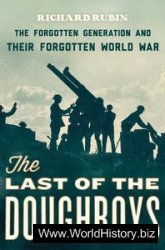Since the evidence indicates that food production was introduced from the north, and that the ancestors of modern Bantu-speaking farmers also came from the north, we can assume at least a partial connection, certainly as far as domestic plants are concerned. The impact of the arrival of Iron Age farmers some 1800 years ago on the aboriginal Khoisan hunting population along the southeast coast of southern Africa may initially have been minimal, as the first farmers needed to adjust to local conditions. This would have been particularly true of the introduction of cattle which Gifford-Gonzalez says needed to deal with epizootic diseases carried by wild animals, such as buffalo and neonate wildebeest, and which are potentially fatal to cattle. By 1500 years ago, the highveld of South Africa was being colonized, and the biological evidence suggests that aboriginal hunters were subsumed into Iron Age populations as African farmers took wives from among the hunters. This resulted in hypergyny (one-way gene flow), since few hunters could have had access to the cattle needed for bride-wealth payments to obtain farming wives.
At the Cape, the historical evidence hints that hunters (called Soaqua) continued to maintain a separate existence to the Khoekhoen, right up to the colonial period in the seventeenth century. This leads to the Dutch perceived separation of ‘Bushmen’ and ‘Hottentots’, as hunters and herders respectively, with the Khoekhoen being the dominant group. In fact, a description by the governor of the Cape, Simon van der Stel, in 1685 epitomizes their relationship: ‘‘We find that these Soaquas are just the same as the poor in Europe, each tribe of Hottentots having some of them and employing them to bring news of the approach of a strange tribe. They steal nothing from the kraals of their employers but regularly from other kraals... possessing nothing... except what they acquire by theft.’’ The historian Elphick challenged this separation, and suggested by the colonial period there was only one group of ‘Hottentots’, and that the Soaqua were Khoekhoen who had lost their stock through theft or disease, and were on the downward part of a cycle of fortune.
The separation between Khoekhoen and Bantuspeaking farmers was ecological. The Cape is a winter rainfall area, so was not available to agriculturalists with summer rainfall crops. Iron Age people never spread to the Cape, leaving the southwest and Atlantic coastal areas open for pastoralism, while in the dry interior the hunters held sway until later in the historic period when deep underground water could be tapped using wind-driven pumps.
See also: Africa, East: Foragers; Africa, North: Sahara, Eastern; Africa, West: Early Holocene Foragers.




 World History
World History









